open-cd中的changerformer网络结构分析
open-cd
目录
- open-cd
- 1.安装
- 2.源码结构分析
- 主干网络
- 1.1 主干网络类
- 2.neck
- 2.Decoder
- 3.测试模型
- 6. changer主干网络
- 总结

该开源库基于:
mmcv
mmseg
mmdet
mmengine
1.安装
在安装过程中遇到的问题:
1.pytorch版本问题,open-cd采用的mmcv版本比较低,建议安装2.3以下版本pytorch,太高了mmcv可能不太适配,先安装pytorch,在安装mmcv,我在安装时用的版本
pytorch 2.1.2 py3.9_cuda12.1_cudnn8_0 pytorch
mmcv 2.1.0 pypi_0 pypi
mmcv安装方式

该方式同样适用于解决:
note: This error originates from a subprocess, and is likely not a problem with pip.ERROR: Failed building wheel for mmcvRunning setup.py clean for mmcv
Failed to build mmcv
ERROR: ERROR: Failed to build installable wheels for some pyproject.toml based projects (mmcv)
参考
之后参照博主的的安装步骤安装opencd的开原文件即可(建议安装源文件,直接 opencd第三方包形式后期不方便调试):
# Install OpenMMLab Toolkits as Python packages
pip install -U openmim
mim install mmengine
mim install "mmpretrain>=1.0.0rc7"
pip install "mmsegmentation>=1.2.2"
pip install "mmdet>=3.0.0"# Install Opencd
git clone https://github.com/likyoo/open-cd.git
cd open-cd
pip install -v -e .
2.源码结构分析

该库主要的文件时1.config参数文件,2.opencd模型架构文件,3.训练推理分析工具,4.mmlab
这里主要介绍2.opencd模型框架文件,文件下包含:

其中,model文件夹下包含模型结构基础文件:

变化检测大致遵循语义分割的编码结构、neck结构、以及解码结构。
如果使用过mmsegmentation机会发现,backbone中存放着雨参数文件对应的主干网络,相应的是neck,decoder,这里changer_detector里面是主要的模型架构如Encoder-Decoder。
open-cd与mmseg这类参数化的文件非常适合进行模型复现或者进行工程化应用;但对一些科研小白,特别是非计算机专业的科研小白需要改进网络就不太友好;这里直观的作用下模型架构的组合使用,方便大家理解和魔改(~~别越看越迷糊就行)
这里以changerformer-mitb0为例:
前提是已完成open-cd的安装官方issue
下面内容摘自opencd/model/
删除每个类前面的注册表装饰器 @MODELS.register_module(),报错提示类已注册
主干网络
# Copyright (c) OpenMMLab. All rights reserved.
import math
import warningsimport torch
import torch.nn as nn
import torch.utils.checkpoint as cp
from mmcv.cnn import Conv2d, build_activation_layer, build_norm_layer
from mmcv.cnn.bricks.drop import build_dropout
from mmcv.cnn.bricks.transformer import MultiheadAttention
from mmengine.model import BaseModule, ModuleList, Sequential
from mmengine.model.weight_init import (constant_init, normal_init,trunc_normal_init)from mmseg.registry import MODELS
## 下面两个依赖在opencd/model/utils中可以找到
from .embed import PatchEmbed
from .shape_convert import nchw_to_nlc, nlc_to_nchwclass MixFFN(BaseModule):"""An implementation of MixFFN of Segformer.The differences between MixFFN & FFN:1. Use 1X1 Conv to replace Linear layer.2. Introduce 3X3 Conv to encode positional information.Args:embed_dims (int): The feature dimension. Same as`MultiheadAttention`. Defaults: 256.feedforward_channels (int): The hidden dimension of FFNs.Defaults: 1024.act_cfg (dict, optional): The activation config for FFNs.Default: dict(type='ReLU')ffn_drop (float, optional): Probability of an element to bezeroed in FFN. Default 0.0.dropout_layer (obj:`ConfigDict`): The dropout_layer usedwhen adding the shortcut.init_cfg (obj:`mmcv.ConfigDict`): The Config for initialization.Default: None."""def __init__(self,embed_dims,feedforward_channels,act_cfg=dict(type='GELU'),ffn_drop=0.,dropout_layer=None,init_cfg=None):super().__init__(init_cfg)self.embed_dims = embed_dimsself.feedforward_channels = feedforward_channelsself.act_cfg = act_cfgself.activate = build_activation_layer(act_cfg)in_channels = embed_dimsfc1 = Conv2d(in_channels=in_channels,out_channels=feedforward_channels,kernel_size=1,stride=1,bias=True)# 3x3 depth wise conv to provide positional encode informationpe_conv = Conv2d(in_channels=feedforward_channels,out_channels=feedforward_channels,kernel_size=3,stride=1,padding=(3 - 1) // 2,bias=True,groups=feedforward_channels)fc2 = Conv2d(in_channels=feedforward_channels,out_channels=in_channels,kernel_size=1,stride=1,bias=True)drop = nn.Dropout(ffn_drop)layers = [fc1, pe_conv, self.activate, drop, fc2, drop]self.layers = Sequential(*layers)self.dropout_layer = build_dropout(dropout_layer) if dropout_layer else torch.nn.Identity()def forward(self, x, hw_shape, identity=None):out = nlc_to_nchw(x, hw_shape)out = self.layers(out)out = nchw_to_nlc(out)if identity is None:identity = xreturn identity + self.dropout_layer(out)class EfficientMultiheadAttention(MultiheadAttention):"""An implementation of Efficient Multi-head Attention of Segformer.This module is modified from MultiheadAttention which is a module frommmcv.cnn.bricks.transformer.Args:embed_dims (int): The embedding dimension.num_heads (int): Parallel attention heads.attn_drop (float): A Dropout layer on attn_output_weights.Default: 0.0.proj_drop (float): A Dropout layer after `nn.MultiheadAttention`.Default: 0.0.dropout_layer (obj:`ConfigDict`): The dropout_layer usedwhen adding the shortcut. Default: None.init_cfg (obj:`mmcv.ConfigDict`): The Config for initialization.Default: None.batch_first (bool): Key, Query and Value are shape of(batch, n, embed_dim)or (n, batch, embed_dim). Default: False.qkv_bias (bool): enable bias for qkv if True. Default True.norm_cfg (dict): Config dict for normalization layer.Default: dict(type='LN').sr_ratio (int): The ratio of spatial reduction of Efficient Multi-headAttention of Segformer. Default: 1."""def __init__(self,embed_dims,num_heads,attn_drop=0.,proj_drop=0.,dropout_layer=None,init_cfg=None,batch_first=True,qkv_bias=False,norm_cfg=dict(type='LN'),sr_ratio=1):super().__init__(embed_dims,num_heads,attn_drop,proj_drop,dropout_layer=dropout_layer,init_cfg=init_cfg,batch_first=batch_first,bias=qkv_bias)self.sr_ratio = sr_ratioif sr_ratio > 1:self.sr = Conv2d(in_channels=embed_dims,out_channels=embed_dims,kernel_size=sr_ratio,stride=sr_ratio)# The ret[0] of build_norm_layer is norm name.self.norm = build_norm_layer(norm_cfg, embed_dims)[1]# handle the BC-breaking from https://github.com/open-mmlab/mmcv/pull/1418 # noqafrom mmseg import digit_version, mmcv_versionif mmcv_version < digit_version('1.3.17'):warnings.warn('The legacy version of forward function in''EfficientMultiheadAttention is deprecated in''mmcv>=1.3.17 and will no longer support in the''future. Please upgrade your mmcv.')self.forward = self.legacy_forwarddef forward(self, x, hw_shape, identity=None):x_q = xif self.sr_ratio > 1:x_kv = nlc_to_nchw(x, hw_shape)x_kv = self.sr(x_kv)x_kv = nchw_to_nlc(x_kv)x_kv = self.norm(x_kv)else:x_kv = xif identity is None:identity = x_q# Because the dataflow('key', 'query', 'value') of# ``torch.nn.MultiheadAttention`` is (num_query, batch,# embed_dims), We should adjust the shape of dataflow from# batch_first (batch, num_query, embed_dims) to num_query_first# (num_query ,batch, embed_dims), and recover ``attn_output``# from num_query_first to batch_first.if self.batch_first:x_q = x_q.transpose(0, 1)x_kv = x_kv.transpose(0, 1)out = self.attn(query=x_q, key=x_kv, value=x_kv)[0]if self.batch_first:out = out.transpose(0, 1)return identity + self.dropout_layer(self.proj_drop(out))def legacy_forward(self, x, hw_shape, identity=None):"""multi head attention forward in mmcv version < 1.3.17."""x_q = xif self.sr_ratio > 1:x_kv = nlc_to_nchw(x, hw_shape)x_kv = self.sr(x_kv)x_kv = nchw_to_nlc(x_kv)x_kv = self.norm(x_kv)else:x_kv = xif identity is None:identity = x_q# `need_weights=True` will let nn.MultiHeadAttention# `return attn_output, attn_output_weights.sum(dim=1) / num_heads`# The `attn_output_weights.sum(dim=1)` may cause cuda error. So, we set# `need_weights=False` to ignore `attn_output_weights.sum(dim=1)`.# This issue - `https://github.com/pytorch/pytorch/issues/37583` report# the error that large scale tensor sum operation may cause cuda error.out = self.attn(query=x_q, key=x_kv, value=x_kv, need_weights=False)[0]return identity + self.dropout_layer(self.proj_drop(out))class TransformerEncoderLayer(BaseModule):"""Implements one encoder layer in Segformer.Args:embed_dims (int): The feature dimension.num_heads (int): Parallel attention heads.feedforward_channels (int): The hidden dimension for FFNs.drop_rate (float): Probability of an element to be zeroed.after the feed forward layer. Default 0.0.attn_drop_rate (float): The drop out rate for attention layer.Default 0.0.drop_path_rate (float): stochastic depth rate. Default 0.0.qkv_bias (bool): enable bias for qkv if True.Default: True.act_cfg (dict): The activation config for FFNs.Default: dict(type='GELU').norm_cfg (dict): Config dict for normalization layer.Default: dict(type='LN').batch_first (bool): Key, Query and Value are shape of(batch, n, embed_dim)or (n, batch, embed_dim). Default: False.init_cfg (dict, optional): Initialization config dict.Default:None.sr_ratio (int): The ratio of spatial reduction of Efficient Multi-headAttention of Segformer. Default: 1.with_cp (bool): Use checkpoint or not. Using checkpoint will savesome memory while slowing down the training speed. Default: False."""def __init__(self,embed_dims,num_heads,feedforward_channels,drop_rate=0.,attn_drop_rate=0.,drop_path_rate=0.,qkv_bias=True,act_cfg=dict(type='GELU'),norm_cfg=dict(type='LN'),batch_first=True,sr_ratio=1,with_cp=False):super().__init__()# The ret[0] of build_norm_layer is norm name.self.norm1 = build_norm_layer(norm_cfg, embed_dims)[1]self.attn = EfficientMultiheadAttention(embed_dims=embed_dims,num_heads=num_heads,attn_drop=attn_drop_rate,proj_drop=drop_rate,dropout_layer=dict(type='DropPath', drop_prob=drop_path_rate),batch_first=batch_first,qkv_bias=qkv_bias,norm_cfg=norm_cfg,sr_ratio=sr_ratio)# The ret[0] of build_norm_layer is norm name.self.norm2 = build_norm_layer(norm_cfg, embed_dims)[1]self.ffn = MixFFN(embed_dims=embed_dims,feedforward_channels=feedforward_channels,ffn_drop=drop_rate,dropout_layer=dict(type='DropPath', drop_prob=drop_path_rate),act_cfg=act_cfg)self.with_cp = with_cpdef forward(self, x, hw_shape):def _inner_forward(x):x = self.attn(self.norm1(x), hw_shape, identity=x)x = self.ffn(self.norm2(x), hw_shape, identity=x)return xif self.with_cp and x.requires_grad:x = cp.checkpoint(_inner_forward, x)else:x = _inner_forward(x)return x# @MODELS.register_module()
class MixVisionTransformer(BaseModule):"""The backbone of Segformer.This backbone is the implementation of `SegFormer: Simple andEfficient Design for Semantic Segmentation withTransformers <https://arxiv.org/abs/2105.15203>`_.Args:in_channels (int): Number of input channels. Default: 3.embed_dims (int): Embedding dimension. Default: 768.num_stags (int): The num of stages. Default: 4.num_layers (Sequence[int]): The layer number of each transformer encodelayer. Default: [3, 4, 6, 3].num_heads (Sequence[int]): The attention heads of each transformerencode layer. Default: [1, 2, 4, 8].patch_sizes (Sequence[int]): The patch_size of each overlapped patchembedding. Default: [7, 3, 3, 3].strides (Sequence[int]): The stride of each overlapped patch embedding.Default: [4, 2, 2, 2].sr_ratios (Sequence[int]): The spatial reduction rate of eachtransformer encode layer. Default: [8, 4, 2, 1].out_indices (Sequence[int] | int): Output from which stages.Default: (0, 1, 2, 3).mlp_ratio (int): ratio of mlp hidden dim to embedding dim.Default: 4.qkv_bias (bool): Enable bias for qkv if True. Default: True.drop_rate (float): Probability of an element to be zeroed.Default 0.0attn_drop_rate (float): The drop out rate for attention layer.Default 0.0drop_path_rate (float): stochastic depth rate. Default 0.0norm_cfg (dict): Config dict for normalization layer.Default: dict(type='LN')act_cfg (dict): The activation config for FFNs.Default: dict(type='GELU').pretrained (str, optional): model pretrained path. Default: None.init_cfg (dict or list[dict], optional): Initialization config dict.Default: None.with_cp (bool): Use checkpoint or not. Using checkpoint will savesome memory while slowing down the training speed. Default: False."""def __init__(self,in_channels=3,embed_dims=64,num_stages=4,num_layers=[3, 4, 6, 3],num_heads=[1, 2, 4, 8],patch_sizes=[7, 3, 3, 3],strides=[4, 2, 2, 2],sr_ratios=[8, 4, 2, 1],out_indices=(0, 1, 2, 3),mlp_ratio=4,qkv_bias=True,drop_rate=0.,attn_drop_rate=0.,drop_path_rate=0.,act_cfg=dict(type='GELU'),norm_cfg=dict(type='LN', eps=1e-6),pretrained=None,init_cfg=None,with_cp=False):super().__init__(init_cfg=init_cfg)assert not (init_cfg and pretrained), \'init_cfg and pretrained cannot be set at the same time'if isinstance(pretrained, str):warnings.warn('DeprecationWarning: pretrained is deprecated, ''please use "init_cfg" instead')self.init_cfg = dict(type='Pretrained', checkpoint=pretrained)elif pretrained is not None:raise TypeError('pretrained must be a str or None')self.embed_dims = embed_dimsself.num_stages = num_stagesself.num_layers = num_layersself.num_heads = num_headsself.patch_sizes = patch_sizesself.strides = stridesself.sr_ratios = sr_ratiosself.with_cp = with_cpassert num_stages == len(num_layers) == len(num_heads) \== len(patch_sizes) == len(strides) == len(sr_ratios)self.out_indices = out_indicesassert max(out_indices) < self.num_stages# transformer encoderdpr = [x.item()for x in torch.linspace(0, drop_path_rate, sum(num_layers))] # stochastic num_layer decay rulecur = 0self.layers = ModuleList()for i, num_layer in enumerate(num_layers):embed_dims_i = embed_dims * num_heads[i]patch_embed = PatchEmbed(in_channels=in_channels,embed_dims=embed_dims_i,kernel_size=patch_sizes[i],stride=strides[i],padding=patch_sizes[i] // 2,norm_cfg=norm_cfg)layer = ModuleList([TransformerEncoderLayer(embed_dims=embed_dims_i,num_heads=num_heads[i],feedforward_channels=mlp_ratio * embed_dims_i,drop_rate=drop_rate,attn_drop_rate=attn_drop_rate,drop_path_rate=dpr[cur + idx],qkv_bias=qkv_bias,act_cfg=act_cfg,norm_cfg=norm_cfg,with_cp=with_cp,sr_ratio=sr_ratios[i]) for idx in range(num_layer)])in_channels = embed_dims_i# The ret[0] of build_norm_layer is norm name.norm = build_norm_layer(norm_cfg, embed_dims_i)[1]self.layers.append(ModuleList([patch_embed, layer, norm]))cur += num_layerdef init_weights(self):if self.init_cfg is None:for m in self.modules():if isinstance(m, nn.Linear):trunc_normal_init(m, std=.02, bias=0.)elif isinstance(m, nn.LayerNorm):constant_init(m, val=1.0, bias=0.)elif isinstance(m, nn.Conv2d):fan_out = m.kernel_size[0] * m.kernel_size[1] * m.out_channelsfan_out //= m.groupsnormal_init(m, mean=0, std=math.sqrt(2.0 / fan_out), bias=0)else:super().init_weights()def forward(self, x):outs = []for i, layer in enumerate(self.layers):x, hw_shape = layer[0](x)for block in layer[1]:x = block(x, hw_shape)x = layer[2](x)x = nlc_to_nchw(x, hw_shape)if i in self.out_indices:outs.append(x)return outs1.1 主干网络类
from torch import nn
from CDmodel.ly_utils.MixVisionTransformer import MixVisionTransformerclass backbone(nn.Module):def __init__(self):super(backbone,self).__init__()self.model = MixVisionTransformer(in_channels=3,embed_dims=32,num_stages=4,num_layers=[2, 2, 2, 2],num_heads=[1, 2, 5, 8],patch_sizes=[7, 3, 3, 3],sr_ratios=[8, 4, 2, 1],out_indices=(0, 1, 2, 3),mlp_ratio=4,qkv_bias=True,drop_rate=0.0,attn_drop_rate=0.0,drop_path_rate=0.1)def forward(self,x1):return self.model.forward(x1)
2.neck
# Copyright (c) Open-CD. All rights reserved.
import torch
from torch import nn
from opencd.registry import MODELSclass FeatureFusionNeck(nn.Module):"""Feature Fusion Neck.Args:policy (str): The operation to fuse features. candidatesare `concat`, `sum`, `diff` and `Lp_distance`.in_channels (Sequence(int)): Input channels.channels (int): Channels after modules, before conv_seg.out_indices (tuple[int]): Output from which layer."""def __init__(self,policy = 'concat',in_channels=None,channels=None,out_indices=(0, 1, 2, 3)):super(FeatureFusionNeck,self).__init__()self.policy = policyself.in_channels = in_channelsself.channels = channelsself.out_indices = out_indices@staticmethoddef fusion(x1, x2, policy):"""Specify the form of feature fusion"""_fusion_policies = ['concat', 'sum', 'diff', 'abs_diff']assert policy in _fusion_policies, 'The fusion policies {} are ' \'supported'.format(_fusion_policies)if policy == 'concat':x = torch.cat([x1, x2], dim=1)elif policy == 'sum':x = x1 + x2elif policy == 'diff':x = x2 - x1elif policy == 'abs_diff':x = torch.abs(x1 - x2)return xdef forward(self, x1, x2):"""Forward function."""assert len(x1) == len(x2), "The features x1 and x2 from the" \"backbone should be of equal length"outs = []for i in range(len(x1)):out = self.fusion(x1[i], x2[i], self.policy)outs.append(out)outs = [outs[i] for i in self.out_indices]return tuple(outs)
2.Decoder
changerformer解码头采用的是’mmseg.SegformerHead’
这个得在mmsegmentation/mmseg/model/head里面找
找到后,删除损失函数、预测推理保留下面部分内容
# Copyright (c) OpenMMLab. All rights reserved.
import warnings
from abc import ABCMeta, abstractmethod
from typing import List, Tuple
from mmcv.cnn import ConvModule
import torch
import torch.nn as nn
from mmengine.model import BaseModule
from torch import Tensorfrom mmseg.registry import MODELS
from mmseg.structures import build_pixel_sampler
from mmseg.utils import ConfigType, SampleList
# from ..losses import accuracy
from layer.resize import resizeclass BaseDecodeHead(nn.Module):"""Base class for BaseDecodeHead.1. The ``init_weights`` method is used to initialize decode_head'smodel parameters. After segmentor initialization, ``init_weights``is triggered when ``segmentor.init_weights()`` is called externally.2. The ``loss`` method is used to calculate the loss of decode_head,which includes two steps: (1) the decode_head model performs forwardpropagation to obtain the feature maps (2) The ``loss_by_feat`` methodis called based on the feature maps to calculate the loss... code:: textloss(): forward() -> loss_by_feat()3. The ``predict`` method is used to predict segmentation results,which includes two steps: (1) the decode_head model performs forwardpropagation to obtain the feature maps (2) The ``predict_by_feat`` methodis called based on the feature maps to predict segmentation resultsincluding post-processing... code:: textpredict(): forward() -> predict_by_feat()Args:in_channels (int|Sequence[int]): Input channels.channels (int): Channels after modules, before conv_seg.num_classes (int): Number of classes.out_channels (int): Output channels of conv_seg. Default: None.threshold (float): Threshold for binary segmentation in the case of`num_classes==1`. Default: None.dropout_ratio (float): Ratio of dropout layer. Default: 0.1.conv_cfg (dict|None): Config of conv layers. Default: None.norm_cfg (dict|None): Config of norm layers. Default: None.act_cfg (dict): Config of activation layers.Default: dict(type='ReLU')in_index (int|Sequence[int]): Input feature index. Default: -1ignore_index (int | None): The label index to be ignored. When usingmasked BCE loss, ignore_index should be set to None. Default: 255.align_corners (bool): align_corners argument of F.interpolate.Default: False.The all mlp Head of segformer.This head is the implementation of`Segformer <https://arxiv.org/abs/2105.15203>` _.Args:interpolate_mode: The interpolate mode of MLP head upsample operation.Default: 'bilinear'."""def __init__(self,in_channels = [v * 2 for v in [32, 64, 160, 256]],channels = 256,num_classes = 2,out_channels=None,threshold=None,dropout_ratio=0.1,conv_cfg=None,norm_cfg=dict(type='SyncBN', requires_grad=True),act_cfg=dict(type='ReLU'),in_index=[0, 1, 2, 3],input_transform='multiple_select',ignore_index=255,interpolate_mode='bilinear',align_corners=False,):super(BaseDecodeHead,self).__init__()# self._init_inputs(in_channels, in_index, input_transform)self.in_channels = in_channelsself.channels = channelsself.dropout_ratio = dropout_ratioself.conv_cfg = conv_cfgself.norm_cfg = norm_cfgself.act_cfg = act_cfgself.in_index = in_indexself.input_transform = input_transformself.ignore_index = ignore_indexself.align_corners = align_cornersself.interpolate_mode = interpolate_modenum_inputs = len(self.in_channels)assert num_inputs == len(self.in_index)self.convs = nn.ModuleList()self.convs = nn.ModuleList()for i in range(num_inputs):self.convs.append(ConvModule(in_channels=self.in_channels[i],out_channels=self.channels,kernel_size=1,stride=1,norm_cfg=self.norm_cfg,act_cfg=self.act_cfg))self.fusion_conv = ConvModule(in_channels=self.channels * num_inputs,out_channels=self.channels,kernel_size=1,norm_cfg=self.norm_cfg)if out_channels is None:if num_classes == 2:warnings.warn('For binary segmentation, we suggest using''`out_channels = 1` to define the output''channels of segmentor, and use `threshold`''to convert `seg_logits` into a prediction''applying a threshold')out_channels = num_classesif out_channels != num_classes and out_channels != 1:raise ValueError('out_channels should be equal to num_classes,''except binary segmentation set out_channels == 1 and'f'num_classes == 2, but got out_channels={out_channels}'f'and num_classes={num_classes}')if out_channels == 1 and threshold is None:threshold = 0.3warnings.warn('threshold is not defined for binary, and defaults''to 0.3')self.num_classes = num_classesself.out_channels = out_channelsself.threshold = thresholdself.conv_seg = nn.Conv2d(channels, self.out_channels, kernel_size=1)if dropout_ratio > 0:self.dropout = nn.Dropout2d(dropout_ratio)else:self.dropout = Nonedef _transform_inputs(self, inputs):"""Transform inputs for decoder.Args:inputs (list[Tensor]): List of multi-level img features.Returns:Tensor: The transformed inputs"""if self.input_transform == 'resize_concat':inputs = [inputs[i] for i in self.in_index]upsampled_inputs = [resize(input=x,size=inputs[0].shape[2:],mode='bilinear',align_corners=self.align_corners) for x in inputs]inputs = torch.cat(upsampled_inputs, dim=1)elif self.input_transform == 'multiple_select':inputs = [inputs[i] for i in self.in_index]else:inputs = inputs[self.in_index]return inputs@abstractmethoddef forward(self, inputs):"""Placeholder of forward function."""# Receive 4 stage backbone feature map: 1/4, 1/8, 1/16, 1/32inputs = self._transform_inputs(inputs)outs = []for idx in range(len(inputs)):x = inputs[idx]conv = self.convs[idx]outs.append(resize(input=conv(x),size=inputs[0].shape[2:],mode=self.interpolate_mode,align_corners=self.align_corners))out = self.fusion_conv(torch.cat(outs, dim=1))out = self.cls_seg(out)return outdef cls_seg(self, feat):"""Classify each pixel."""if self.dropout is not None:feat = self.dropout(feat)output = self.conv_seg(feat)return output3.测试模型
import torch
from torch import nn
# from torchsummary import summary
from torchinfo import summaryfrom backbone1 import backbone
from neck import FeatureFusionNeck
from head import BaseDecodeHeadclass siamencoderdecoder(nn.Module):def __init__(self):super(siamencoderdecoder, self).__init__()self.backbone = backbone()# self.backbone2 = backbone()self.neck = FeatureFusionNeck()self.head = BaseDecodeHead()def backboneforward(self,x1,x2):# 孪生主干网络特征提取x1,x2 = self.backbone(x1),self.backbone(x2)return x1,x2def forward(self,x1,x2):x1,x2 = self.backboneforward(x1,x2)x = self.neck(x1,x2)logit = self.head(x)return logitif __name__ == "__main__":inputs = torch.rand(3, 224, 224)model = siamencoderdecoder()device = torch.device('cuda' if torch.cuda.is_available() else 'cpu')model.to(device)summary(model,input_size=[(1,3,256,256),(1,3,256,256)])summary
========================================================================================================================
Layer (type:depth-idx) Output Shape Param #
========================================================================================================================
siamencoderdecoder [1, 2, 64, 64] --
├─backbone: 1-1 -- (recursive)
│ └─MixVisionTransformer: 2-2 -- (recursive)
│ │ └─ModuleList: 3-2 -- (recursive)
├─backbone: 1-2 [1, 32, 64, 64] 3,319,392
│ └─MixVisionTransformer: 2-2 -- (recursive)
│ │ └─ModuleList: 3-2 -- (recursive)
├─FeatureFusionNeck: 1-3 [1, 64, 64, 64] --
├─BaseDecodeHead: 1-4 [1, 2, 64, 64] --
│ └─ModuleList: 2-3 -- --
│ │ └─ConvModule: 3-3 [1, 256, 64, 64] 16,896
│ │ └─ConvModule: 3-4 [1, 256, 32, 32] 33,280
│ │ └─ConvModule: 3-5 [1, 256, 16, 16] 82,432
│ │ └─ConvModule: 3-6 [1, 256, 8, 8] 131,584
│ └─ConvModule: 2-4 [1, 256, 64, 64] --
│ │ └─Conv2d: 3-7 [1, 256, 64, 64] 262,144
│ │ └─SyncBatchNorm: 3-8 [1, 256, 64, 64] 512
│ │ └─ReLU: 3-9 [1, 256, 64, 64] --
│ └─Dropout2d: 2-5 [1, 256, 64, 64] --
│ └─Conv2d: 2-6 [1, 2, 64, 64] 514
========================================================================================================================
Total params: 7,166,146
Trainable params: 7,166,146
Non-trainable params: 0
Total mult-adds (G): 2.09
========================================================================================================================
Input size (MB): 1.57
Forward/backward pass size (MB): 141.75
Params size (MB): 12.29
Estimated Total Size (MB): 155.62
========================================================================================================================Process finished with exit code 0
6. changer主干网络
opencd作者提了一个主干网络特征交换的idea,通过继承ResNet实现的网络结构,并在主网络中给出了使用实例:
Example:
# >>> from opencd.models import IA_ResNet
# >>> import torch
# >>> self = IA_ResNet(depth=18)
# >>> self.eval()
# >>> inputs = torch.rand(1, 3, 32, 32)
# >>> level_outputs = self.forward(inputs, inputs)
# >>> for level_out in level_outputs:
# … print(tuple(level_out.shape))
(1, 128, 8, 8)
(1, 256, 4, 4)
(1, 512, 2, 2)
(1, 1024, 1, 1)
“”"
# Copyright (c) Open-CD. All rights reserved.
import torch
import torch.nn as nnfrom mmseg.models.backbones import ResNet
from opencd.registry import MODELS# @MODELS.register_module()
class IA_ResNet(ResNet):"""Interaction ResNet backbone.Args:interaction_cfg (Sequence[dict]): Interaction strategies for the stages.The length should be the same as `num_stages`. The details can befound in `opencd/models/ly_utils/interaction_layer.py`.Default: (None, None, None, None).depth (int): Depth of resnet, from {18, 34, 50, 101, 152}.in_channels (int): Number of input image channels. Default: 3.stem_channels (int): Number of stem channels. Default: 64.base_channels (int): Number of base channels of res layer. Default: 64.num_stages (int): Resnet stages, normally 4. Default: 4.strides (Sequence[int]): Strides of the first block of each stage.Default: (1, 2, 2, 2).dilations (Sequence[int]): Dilation of each stage.Default: (1, 1, 1, 1).out_indices (Sequence[int]): Output from which stages.Default: (0, 1, 2, 3).style (str): `pytorch` or `caffe`. If set to "pytorch", the stride-twolayer is the 3x3 conv layer, otherwise the stride-two layer isthe first 1x1 conv layer. Default: 'pytorch'.deep_stem (bool): Replace 7x7 conv in input stem with 3 3x3 conv.Default: False.avg_down (bool): Use AvgPool instead of stride conv whendownsampling in the bottleneck. Default: False.frozen_stages (int): Stages to be frozen (stop grad and set eval mode).-1 means not freezing any parameters. Default: -1.conv_cfg (dict | None): Dictionary to construct and config conv layer.When conv_cfg is None, cfg will be set to dict(type='Conv2d').Default: None.norm_cfg (dict): Dictionary to construct and config norm layer.Default: dict(type='BN', requires_grad=True).norm_eval (bool): Whether to set norm layers to eval mode, namely,freeze running stats (mean and var). Note: Effect on Batch Normand its variants only. Default: False.dcn (dict | None): Dictionary to construct and config DCN conv layer.When dcn is not None, conv_cfg must be None. Default: None.stage_with_dcn (Sequence[bool]): Whether to set DCN conv for eachstage. The length of stage_with_dcn is equal to num_stages.Default: (False, False, False, False).plugins (list[dict]): List of plugins for stages, each dict contains:- cfg (dict, required): Cfg dict to build plugin.- position (str, required): Position inside block to insert plugin,options: 'after_conv1', 'after_conv2', 'after_conv3'.- stages (tuple[bool], optional): Stages to apply plugin, lengthshould be same as 'num_stages'.Default: None.multi_grid (Sequence[int]|None): Multi grid dilation rates of laststage. Default: None.contract_dilation (bool): Whether contract first dilation of each layerDefault: False.with_cp (bool): Use checkpoint or not. Using checkpoint will save somememory while slowing down the training speed. Default: False.zero_init_residual (bool): Whether to use zero init for last norm layerin resblocks to let them behave as identity. Default: True.pretrained (str, optional): model pretrained path. Default: None.init_cfg (dict or list[dict], optional): Initialization config dict.Default: None.Example:# >>> from opencd.models import IA_ResNet# >>> import torch# >>> self = IA_ResNet(depth=18)# >>> self.eval()# >>> inputs = torch.rand(1, 3, 32, 32)# >>> level_outputs = self.forward(inputs, inputs)# >>> for level_out in level_outputs:# ... print(tuple(level_out.shape))(1, 128, 8, 8)(1, 256, 4, 4)(1, 512, 2, 2)(1, 1024, 1, 1)"""def __init__(self,interaction_cfg=(None, None, None, None),**kwargs):super().__init__(**kwargs)assert self.num_stages == len(interaction_cfg), \'The length of the `interaction_cfg` should be same as the `num_stages`.'# cross-correlationself.ccs = []for ia_cfg in interaction_cfg:if ia_cfg is None:ia_cfg = dict(type='TwoIdentity')self.ccs.append(MODELS.build(ia_cfg))self.ccs = nn.ModuleList(self.ccs)def forward(self, x1, x2):"""Forward function."""def _stem_forward(x):if self.deep_stem:x = self.stem(x)else:x = self.conv1(x)x = self.norm1(x)x = self.relu(x)x = self.maxpool(x)return xx1 = _stem_forward(x1)x2 = _stem_forward(x2)outs = []for i, layer_name in enumerate(self.res_layers):res_layer = getattr(self, layer_name)x1 = res_layer(x1)x2 = res_layer(x2)x1, x2 = self.ccs[i](x1, x2)if i in self.out_indices:outs.append(torch.cat([x1, x2], dim=1))return tuple(outs)# @MODELS.register_module()
class IA_ResNetV1c(IA_ResNet):"""ResNetV1c variant described in [1]_.Compared with default ResNet(ResNetV1b), ResNetV1c replaces the 7x7 conv inthe input stem with three 3x3 convs. For more details please refer to `Bagof Tricks for Image Classification with Convolutional Neural Networks<https://arxiv.org/abs/1812.01187>`_."""def __init__(self, **kwargs):super(IA_ResNetV1c, self).__init__(deep_stem=True, avg_down=False, **kwargs)# @MODELS.register_module()
class IA_ResNetV1d(IA_ResNet):"""ResNetV1d variant described in [1]_.Compared with default ResNet(ResNetV1b), ResNetV1d replaces the 7x7 conv inthe input stem with three 3x3 convs. And in the downsampling block, a 2x2avg_pool with stride 2 is added before conv, whose stride is changed to 1."""def __init__(self, **kwargs):super(IA_ResNetV1d, self).__init__(deep_stem=True, avg_down=True, **kwargs)
下面在上述环境下我们来调用一下
import torch
from IA_ResNet import IA_ResNetV1c
backbone = IA_ResNetV1c(depth=18)
backbone.eval()
inputs = torch.rand(1, 3, 256, 256)
level_outputs = backbone.forward(inputs, inputs)
for level_out in level_outputs:print(tuple(level_out.shape))
# output:
(1, 128, 64, 64)
(1, 256, 32, 32)
(1, 512, 16, 16)
(1, 1024, 8, 8)
总结
通过上述内容,我们可以根据参数文件中的内容提取opencd中任意网络结构,或采用timm来设置主干网络结构,或添加到自己的训练框架中如pytorch_segmentation中进行训练。相应的,我们可以进一步去学习mmalb的框架结构
相关文章:

open-cd中的changerformer网络结构分析
open-cd 目录 open-cd1.安装2.源码结构分析主干网络1.1 主干网络类2.neck2.Decoder3.测试模型6. changer主干网络 总结 该开源库基于: mmcv mmseg mmdet mmengine 1.安装 在安装过程中遇到的问题: 1.pytorch版本问题,open-cd采用的mmcv版本比…...
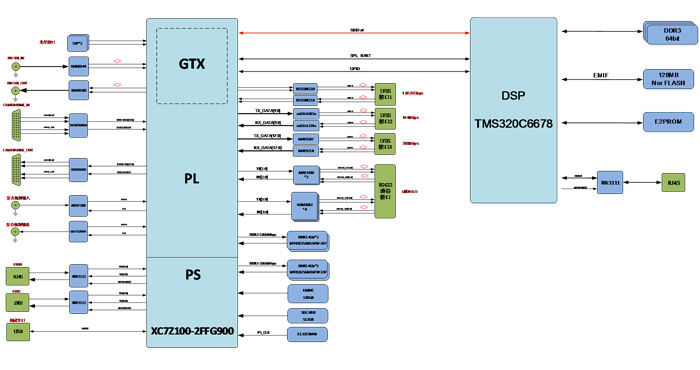
太速科技-426-基于XC7Z100+TMS320C6678的图像处理板卡
基于XC7Z100TMS320C6678的图像处理板卡 一、板卡概述 板卡基于独立的结构,实现ZYNQ XC7Z100DSP TMS320C6678的多路图像输入输出接口的综合图像处理,包含1路Camera link输入输出、1路HD-SDI输入输出、1路复合视频输入输出、2路光纤等视频接口,…...

asp.net Core 自定义中间件
内联中间件 中间件转移到类中 推荐中间件通过IApplicationBuilder 公开中间件 使用扩展方法 调用中间件 含有依赖项的 》》》中间件 参考资料...

掌握 C# 设计模式:从基础到依赖注入
设计模式是一种可以在开发中重复使用的解决方案,能够提高代码的可维护性、扩展性和复用性。C# 中常见的设计模式包括单例模式、工厂模式、观察者模式、策略模式等。本文将介绍这些常见的设计模式,并探讨 SOLID 原则和依赖注入(Dependency Inj…...

根据json转HttpClient脚本
String json “{\n” " “paths”: {\n" " “/dev-api/system/subjectResult/exportUserList”: {\n" " “post”: {\n" " “tags”: [\n" " “bd-subject-result-controller”\n" " ],\n" " “summ…...
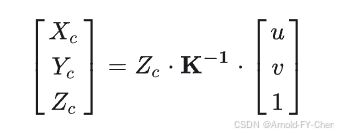
如何将LiDAR坐标系下的3D点投影到相机2D图像上
将激光雷达点云投影到相机图像上做数据层的前融合,或者把激光雷达坐标系下标注的物体点云的3d bbox投影到相机图像上画出来,都需要做点云3D点坐标到图像像素坐标的转换计算,也就是LiDAR 3D坐标转像素坐标。 看了网上一些文章都存在有错误或者…...

JAVA就业笔记6——第二阶段(3)
课程须知 A类知识:工作和面试常用,代码必须要手敲,需要掌握。 B类知识:面试会问道,工作不常用,代码不需要手敲,理解能正确表达即可。 C类知识:工作和面试不常用,代码不…...

02.04、分割链表
02.04、[中等] 分割链表 1、题目描述 给你一个链表的头节点 head 和一个特定值 x ,请你对链表进行分隔,使得所有 小于 x 的节点都出现在 大于或等于 x 的节点之前。 你不需要 保留 每个分区中各节点的初始相对位置。 2、解题思路 本题要求将链表分隔…...

Excel 中根据患者的就诊时间标记病例为“初诊”或“复诊”
1. 假设: 患者表:包含患者的基本信息,如患者 ID 和患者姓名。 病例表:包含病例信息,如患者 ID、就诊时间和就诊状态。 2. 操作步骤: 合并数据: 确保病例表中有一列包含患者 ID,以…...

遇到“mfc100u.dll丢失”的系统错误要怎么处理?科学修复mfc100u.dll
遇到“mfc100u.dll丢失”的系统错误会非常麻烦,因为mfc100u.dll是Microsoft Visual C 2010 Redistributable Package的重要部分,许多应用程序和游戏在运行时都需要调用这个文件。如果这个文件缺失,可能会导致相关软件或游戏启动失败。面对这种…...

[Linux] 逐层深入理解文件系统 (1)—— 进程操作文件
标题:[Linux] 文件系统 (1)—— 进程操作文件 个人主页水墨不写bug (图片来源于网络) 目录 一、进程与打开的文件 二、文件的系统调用与库函数的关系 1.系统调用open() 三、内存中的文件描述符表 四、缓冲区…...

RT-Thread 互斥量的概念
目录 概述 1 互斥量定义 1.1 概念介绍 1.2 线程优先级翻转问题 2 互斥量管理 2.1 结构体定义 2.2 函数接口介绍 2.2.1 rt_mutex_create函数 2.2.2 rt_mutex_delete 函数 2.2.3 初始化和脱离互斥量 概述 本文主要介绍互斥量的概念,实现原理。还介绍RT-Thre…...

6.计算机网络_UDP
UDP的主要特点: 无连接,发送数据之前不需要建立连接。不保证可靠交付。面向报文。应用层给UDP报文后,UDP并不会抽象为一个一个的字节,而是整个报文一起发送。没有拥塞控制。网络拥堵时,发送端并不会降低发送速率。可以…...

Windows应急响蓝安服面试
Windows应急响应 蓝队溯源流程 学习Windows应急首先要站在攻击者的角度去学习一些权限维持和权限提升的方法.,文章中的方法其实和内网攻防笔记有类似l红队教你怎么利用 蓝队教你怎么排查 攻防一体,应急响应排查这些项目就可以 端口/服务/进程/后门文件都是为了权限维持,得到s…...

PCL 点云配准-4PCS算法(粗配准)
目录 一、概述 1.1原理 1.2实现步骤 1.3应用场景 二、代码实现 2.1关键函数 2.1.1 加载点云数据 2.1.2 执行4PCS粗配准 2.1.3 可视化源点云、目标点云和配准结果 2.2完整代码 三、实现效果 3.1原始点云 3.2配准后点云 PCL点云算法汇总及实战案例汇总的目录地址链接…...

12、论文阅读:利用生成对抗网络实现无监督深度图像增强
Towards Unsupervised Deep Image Enhancement With Generative Adversarial Network 摘要介绍相关工作传统图像增强基于学习的图像增强 论文中提出的方法动机和目标网络架构损失函数1) 质量损失2) 保真损失3)身份损失4)Total Loss 实验 摘要 提高图像的…...

Axure重要元件三——中继器表单制作
亲爱的小伙伴,在您浏览之前,烦请关注一下,在此深表感谢! 本节课:中继器表单制作 课程内容:利用中继器制作表单 应用场景:台账、表单 案例展示: 步骤一:建立一个背景区…...

DMAIC赋能智能家居:解锁未来生活新篇章!
从清晨自动拉开的窗帘,到夜晚自动调暗的灯光,每一处细节都透露着科技的温度与智慧的光芒。而在这场智能革命的浪潮中,DMAIC(定义Define、测量Measure、分析Analyze、改进Improve、控制Control)作为六西格玛管理的核心方…...

代码随想录算法训练营第二天| 209.长度最小的子数组 59.螺旋矩阵II 区间和 开发商购买土地
209. 长度最小的子数组 题目: 给定一个包含正整数的数组 nums 和一个正整数 target ,找出该数组中满足其和 ≥ target 的长度最小的 连续子数组 ,并返回其长度。如果不存在符合条件的子数组,返回 0。 示例: 示例 1…...

mysql隐藏索引
1. 什么是隐藏索引? 在 MySQL 8 中,隐藏索引(Invisible Indexes)是指一种特殊类型的索引,它并不真正被删除,而是被标记为“不可见”。当索引被标记为不可见时,查询优化器在生成查询计划时将忽略…...
结构体的进阶应用)
基于算法竞赛的c++编程(28)结构体的进阶应用
结构体的嵌套与复杂数据组织 在C中,结构体可以嵌套使用,形成更复杂的数据结构。例如,可以通过嵌套结构体描述多层级数据关系: struct Address {string city;string street;int zipCode; };struct Employee {string name;int id;…...

内存分配函数malloc kmalloc vmalloc
内存分配函数malloc kmalloc vmalloc malloc实现步骤: 1)请求大小调整:首先,malloc 需要调整用户请求的大小,以适应内部数据结构(例如,可能需要存储额外的元数据)。通常,这包括对齐调整,确保分配的内存地址满足特定硬件要求(如对齐到8字节或16字节边界)。 2)空闲…...
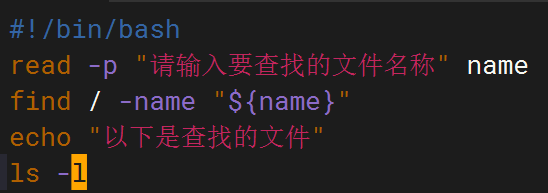
shell脚本--常见案例
1、自动备份文件或目录 2、批量重命名文件 3、查找并删除指定名称的文件: 4、批量删除文件 5、查找并替换文件内容 6、批量创建文件 7、创建文件夹并移动文件 8、在文件夹中查找文件...

Qt Widget类解析与代码注释
#include "widget.h" #include "ui_widget.h"Widget::Widget(QWidget *parent): QWidget(parent), ui(new Ui::Widget) {ui->setupUi(this); }Widget::~Widget() {delete ui; }//解释这串代码,写上注释 当然可以!这段代码是 Qt …...

React Native在HarmonyOS 5.0阅读类应用开发中的实践
一、技术选型背景 随着HarmonyOS 5.0对Web兼容层的增强,React Native作为跨平台框架可通过重新编译ArkTS组件实现85%以上的代码复用率。阅读类应用具有UI复杂度低、数据流清晰的特点。 二、核心实现方案 1. 环境配置 (1)使用React Native…...

数据链路层的主要功能是什么
数据链路层(OSI模型第2层)的核心功能是在相邻网络节点(如交换机、主机)间提供可靠的数据帧传输服务,主要职责包括: 🔑 核心功能详解: 帧封装与解封装 封装: 将网络层下发…...
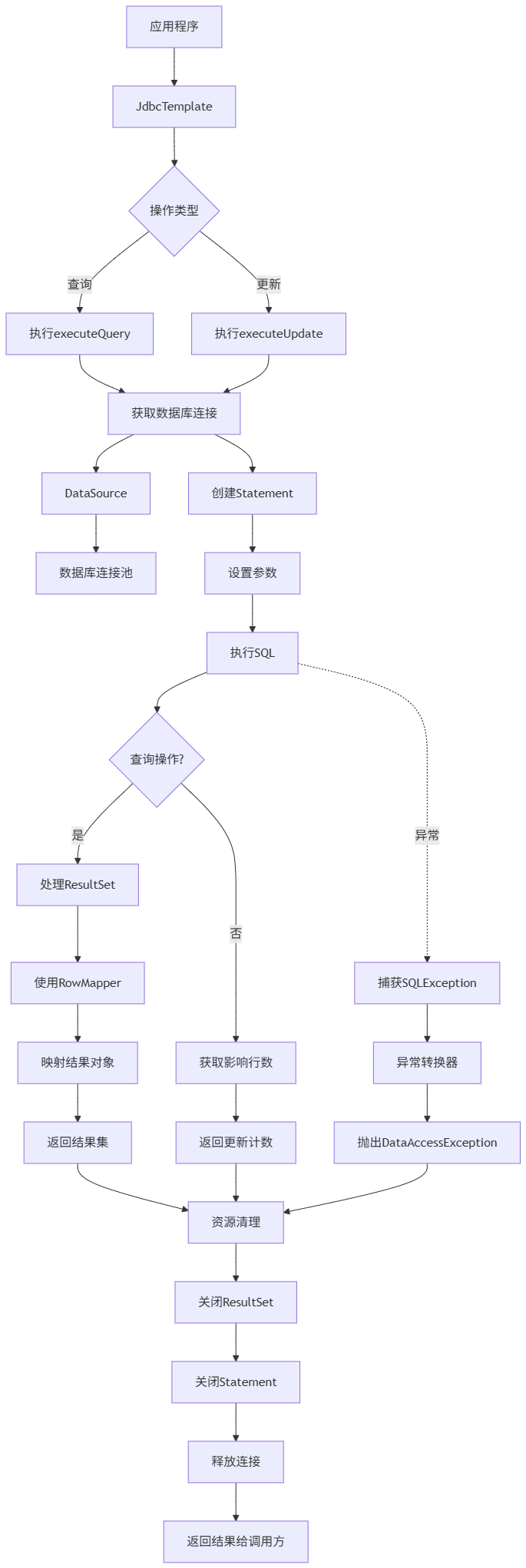
Spring数据访问模块设计
前面我们已经完成了IoC和web模块的设计,聪明的码友立马就知道了,该到数据访问模块了,要不就这俩玩个6啊,查库势在必行,至此,它来了。 一、核心设计理念 1、痛点在哪 应用离不开数据(数据库、No…...

蓝桥杯3498 01串的熵
问题描述 对于一个长度为 23333333的 01 串, 如果其信息熵为 11625907.5798, 且 0 出现次数比 1 少, 那么这个 01 串中 0 出现了多少次? #include<iostream> #include<cmath> using namespace std;int n 23333333;int main() {//枚举 0 出现的次数//因…...
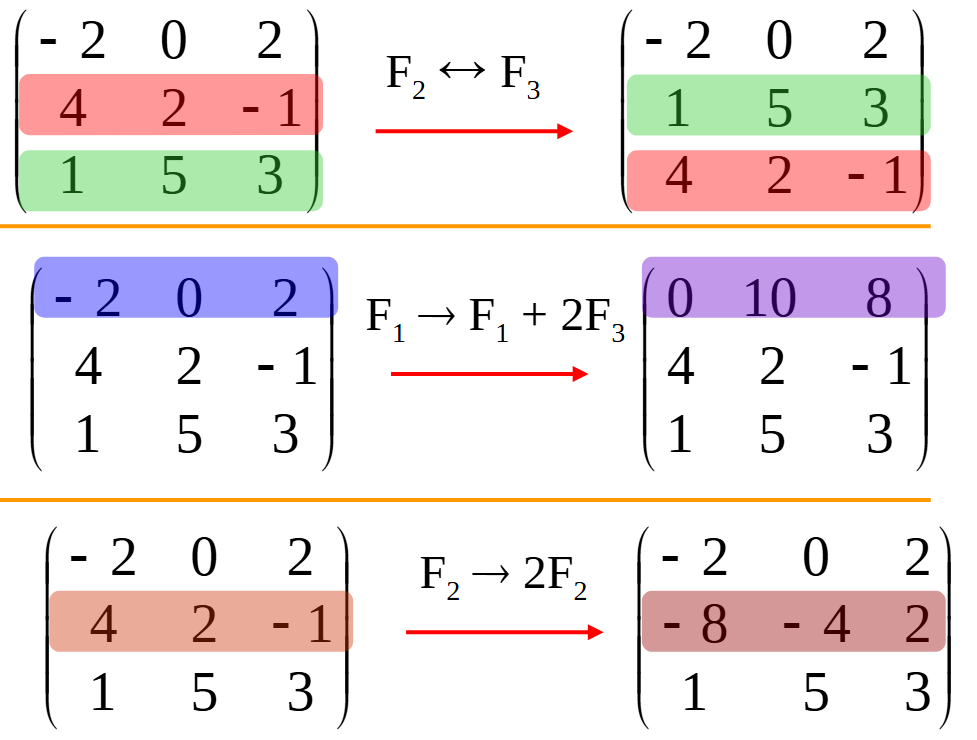
使用 SymPy 进行向量和矩阵的高级操作
在科学计算和工程领域,向量和矩阵操作是解决问题的核心技能之一。Python 的 SymPy 库提供了强大的符号计算功能,能够高效地处理向量和矩阵的各种操作。本文将深入探讨如何使用 SymPy 进行向量和矩阵的创建、合并以及维度拓展等操作,并通过具体…...
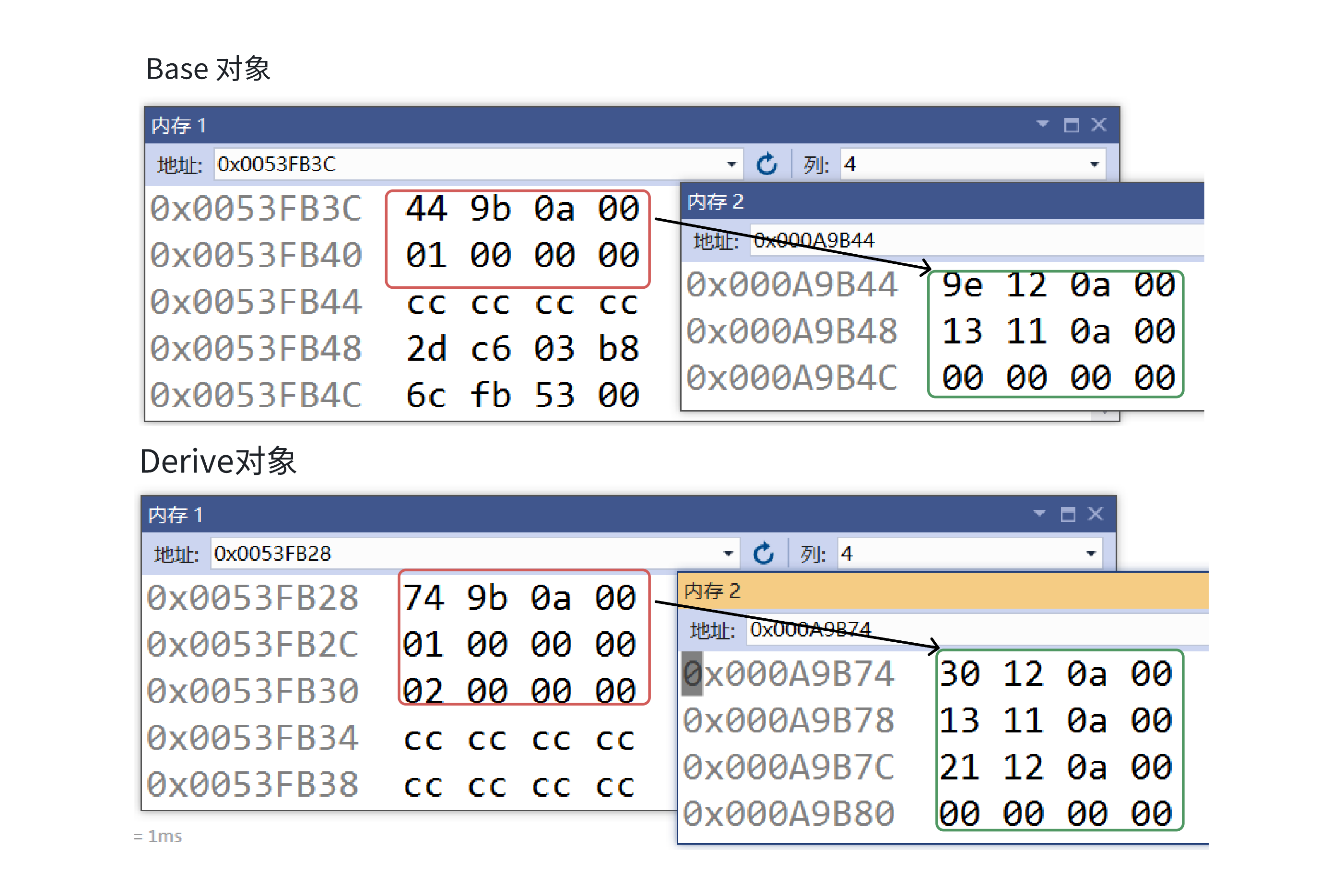
C++:多态机制详解
目录 一. 多态的概念 1.静态多态(编译时多态) 二.动态多态的定义及实现 1.多态的构成条件 2.虚函数 3.虚函数的重写/覆盖 4.虚函数重写的一些其他问题 1).协变 2).析构函数的重写 5.override 和 final关键字 1&#…...
